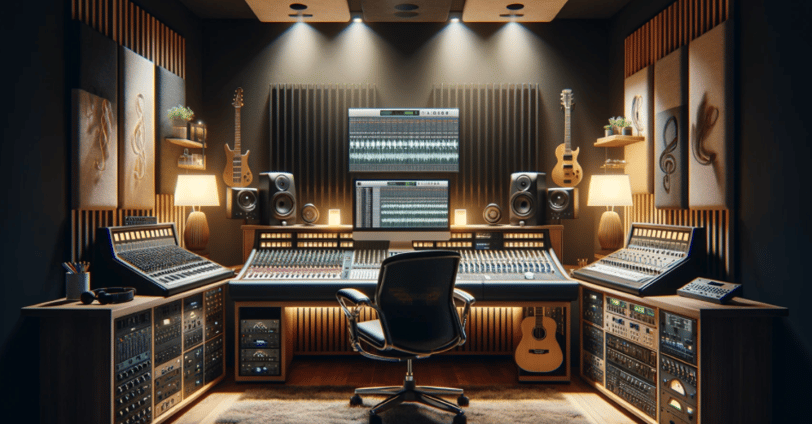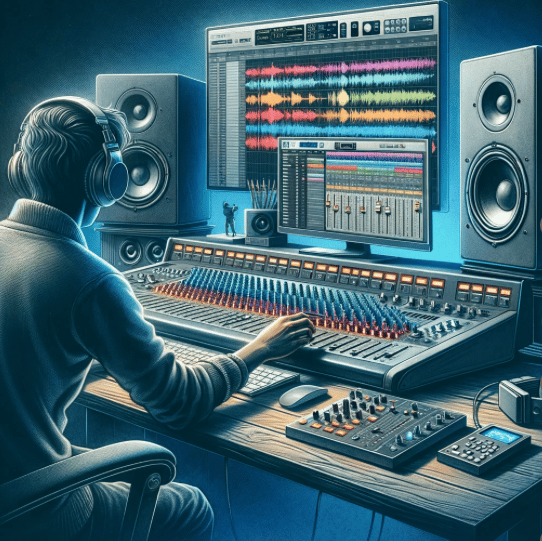Mastering the Art of Mixing and Mastering
The Producer's Blueprint: Mastering the Art of Mixing and Mastering for Professional-Sounding Tracks
1/18/20243 min read


Welcome to the captivating world of music production, where the final frontier of any track lies in the realms of mixing and mastering. Often misunderstood or used interchangeably, these are distinct, intricate arts crucial to the success of any musical piece. This post is dedicated to unraveling the mysteries of mixing and mastering, empowering both aspiring and seasoned musicians with the knowledge and expertise to elevate their tracks to a professional zenith.
Mixing is an art form where individual tracks are woven into a seamless tapestry of sound, balancing elements to create a harmonious final product. Mastering, on the other hand, is the final polish, ensuring the track shines across various playback systems. Together, they transform good music into an exceptional auditory experience.
No matter your experience level, this guide promises to be an enlightening journey through the core principles, advanced techniques, and industry secrets of mixing and mastering. Prepare to dive deep into the world of professional audio production, where your music's potential is limited only by your imagination.
The Basics of Mixing
Understanding the Fundamentals: Mixing is the process of combining multiple individual tracks into a single, cohesive audio file. It’s about balance, dynamics, and creating a sonically pleasing whole from the sum of its parts. Key tools include Digital Audio Workstations (DAWs), various plugins, and quality studio monitors or headphones.
Core Techniques: At the heart of mixing are fundamental techniques like EQ (Equalization), which helps in balancing frequencies; Compression, to control the dynamic range; Reverb, for adding depth and space; and Panning, for placing sounds within the stereo field.
Common Pitfalls: Newcomers often make mistakes like over-EQing, over-compression, or neglecting the importance of a good room setup and monitor placement. Avoid these pitfalls by adopting a less-is-more approach and continually educating yourself.
Advanced Mixing Techniques
Elevating Your Mix: As you progress, delve into advanced EQ techniques like surgical EQ for tackling problematic frequencies. Learn dynamic EQ for more responsive adjustments. Understand the nuanced use of compression - from side-chain compression, which can help certain elements like a kick drum cut through, to parallel compression for a fuller sound.
Genre-specific Mixing: Each genre, from rock to EDM, has its unique mixing requirements. For instance, EDM might demand more pronounced bass and crisp highs, while rock could focus on a warm mid-range and dynamic vocals.
Introduction to Mastering
Mastering Defined: Mastering is the final touch, a process of refining and preparing the track for distribution. It’s about consistency across various playback systems and ensuring your track competes favorably in terms of loudness and tone with other professional tracks.
Tools of the Trade: Mastering requires tools like a good limiter, a precise EQ, and sometimes a stereo imaging plugin to enhance the stereo field.
Mastering Techniques
Polishing Your Track: Key techniques in mastering include subtle EQ adjustments, light compression for a cohesive sound, and careful limiting to achieve the desired loudness without sacrificing dynamics. Understanding the Loudness War and the importance of dynamics over mere volume is crucial.
Mastering for Formats: Different formats, like streaming, CD, or vinyl, require different mastering approaches. For instance, streaming services have specific loudness standards, and vinyl demands attention to low-end management.
Recommended Software and Plugins
Choosing Your Tools: The market offers a plethora of DAWs and plugins. Beginners might start with affordable options like FL Studio or Ableton Live, while professionals might prefer Pro Tools or Logic Pro. Plugins range from native DAW effects to specialized third-party offerings from companies like Waves, iZotope, and Universal Audio.
Best Practices and Tips
Final Advice: Essential tips include the importance of a well-treated room, using reference tracks, and knowing when to step back and take a break to avoid ear fatigue. Collaborate with others and consider professional mastering for an unbiased final touch.
Conclusion
Mixing and mastering are vast fields with endless learning opportunities. This guide scratches the surface, offering foundational knowledge and a peek into advanced techniques.
Next time, we dive deeper into the ocean of music production. We’ll explore the nuances of songwriting, the magic of sound design, and the latest trends shaking up the music world. Join us as we continue to unravel.


